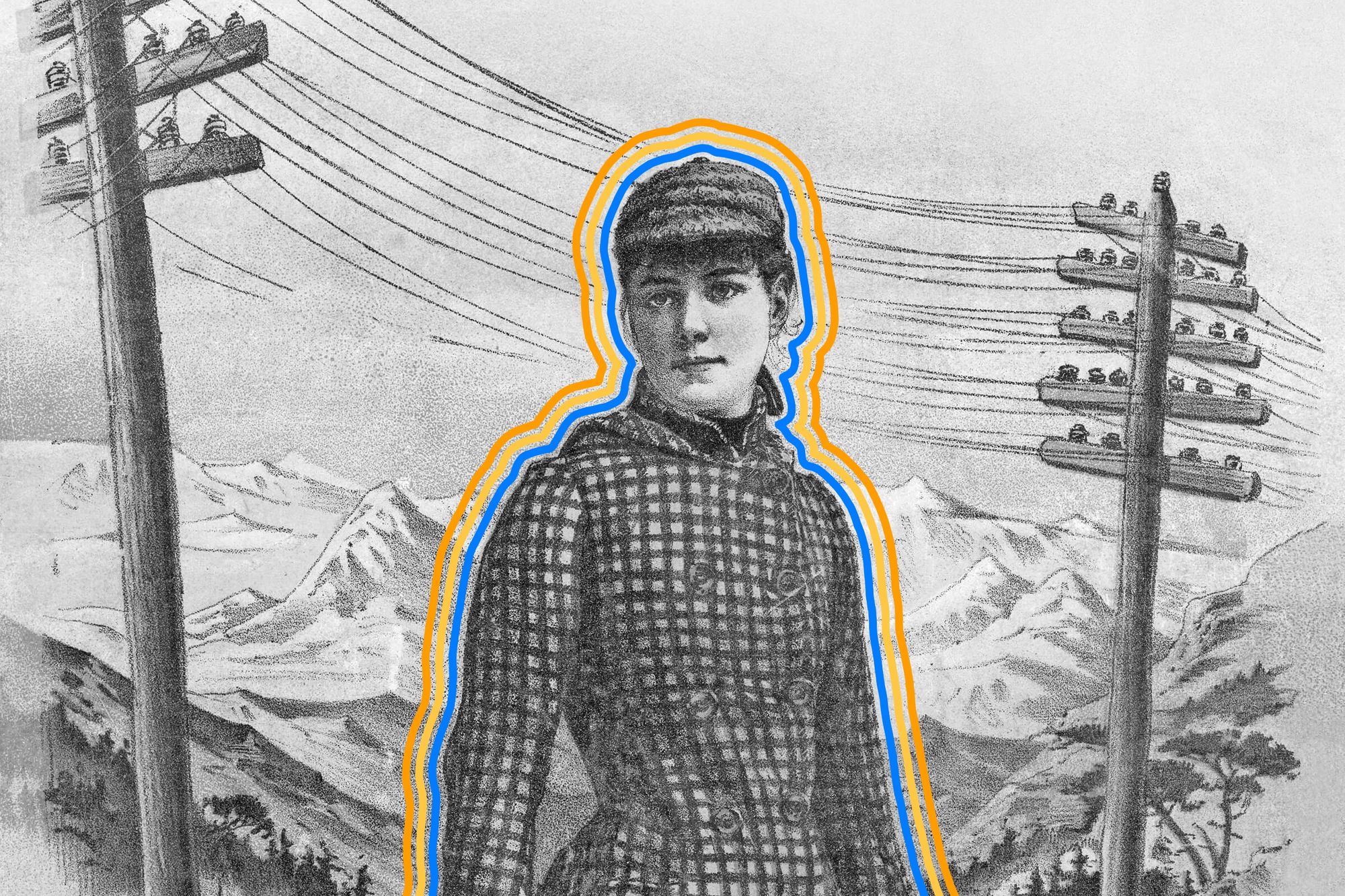

Nellie Bly is best known for her solo journey around the globe in just 72 days, but her work as an investigative reporter, which focused on uplifting society’s most downtrodden, is no less noteworthy. Her in-depth, first-person exposés of abuse, injustice, and corruption were devoured by readers who reacted with shock, awe, and calls for reform. Elizabeth Cochrane — the real woman behind the famed pen name — was known for risking her personal safety to advocate for others. A hundred years after her death in 1922, here’s the backstory on one of America’s earliest correspondents.
Bly Originally Planned To Be a Teacher

Nellie Bly didn’t set out to become famous. Born Elizabeth Cochran (she would later add the “e” to appear distinguished) in 1864, the future writer lived the first years of her life in upper-class comfort outside of Pittsburgh thanks to her father’s work as a judge and mill owner. His death six years later left the family in financial upheaval that would forever impact Cochrane’s life; along with her mother, Cochrane and her four siblings were forced from their home and nearly penniless. Realizing she’d have to make her own way in the world, Cochrane enrolled as a teenager at Pennsylvania’s State Normal School with the goal of teaching, but left after just one semester of study drained her tuition fund.
An Angry Letter Got Bly Her First Writing Job

After dropping out of college and returning to Pittsburgh, Cochrane spent her days working in her mother’s boarding house and reading local newspapers. In 1885, a columnist for the Pittsburg Dispatch penned a diatribe against employed women, whom he called a “monstrosity.” Incensed, Cochrane submitted an anonymous letter to the editor that caught the paper’s attention, and the editor published an ad asking for the unnamed writer to come forward. Cochrane responded in person, and was granted her first step into a writing career when the editor asked her to write an article on “the woman’s sphere.” In “The Girl Puzzle,” her first published piece, Cochrane expressed the difficulties faced by low-income women, including unemployment, violence, and homelessness.
Nellie Bly’s Pen Name Came From a Song

Women reporters of the late 19th century often stamped pseudonyms on their work. When it came to investigating unscrupulous characters and social ills, pen names offered women a layer of personal security against backlash. Nellie Bly was no different; in her case, the staff at the Pittsburg Dispatch snagged the moniker from “Nelly Bly,” a popular song by Pittsburgh composer Stephen Foster. The alternate spelling was an accident, a typo that went to print and stuck around for all of Bly’s career.
Bly’s Reporting Improved Mental Illness Treatment

In 1887, Bly launched her first undercover story for The New York World, becoming a “girl stunt reporter,” part of a then-popular movement of female reporters who embedded themselves in investigations to expose dangerous working conditions, corrupt public figures, and social atrocities. Bly’s initial investigation involved a 10-day stay at the infamous Blackwell’s Island Asylum in New York City, where women experiencing mental health crises (as well as others sent there for a variety of reasons, including not speaking English) were subjected to cruel “treatments,” rotten food, and abuse. After her release, Bly penned a story that exposed the institution’s horrors and led to public calls for improved conditions, including a grand jury investigation and budget increases to properly house and help patients. It also became one of her most famous books, titled Ten Days in a Mad-House.
Nellie Bly Was the Star of Her Own Board Game

Bly’s 1889 world traveling stunt catapulted her to stardom. Using Jules Verne’s adventure novel Around the World in 80 Days as a road map, the journalist launched a world tour from Hoboken, New Jersey, that took a mere 72 days. Along her route — which included a detour in France to meet the book’s author — Bly cabled her adventures back to her newspaper editors in the U.S., allowing readers to follow along. Upon her return, the McLoughlin Brothers publishing company produced a board game that replicated her adventure, offering players “plenty of excitement on land and sea.” (The results also became her final book, Around the World in Seventy-Two Days, which became a massive success.)
Nellie Bly Was a Patent-Holding Inventor

In 1895, Bly married Robert Seaman, an industrialist some 40 years her senior. Taking a leave from journalism — and her byline — Elizabeth Cochrane Seaman became involved in her husband’s metalworks business, where she helped conceptualize steel barrels that would later evolve into the modern 55-gallon oil drum. The former reporter didn’t hold the patent for the barrels, but she did hold patents for two other inventions: a stacking trash can and a milk can.
Bly Was an Advocate for Workers’ Rights

After Seaman’s death in 1904, Bly became the sole manager of their manufacturing company. In an effort to improve the welfare of her employees, she began offering unprecedented benefits, including health care, library access, and fitness programs. Financial problems, including the cost of her programs, ultimately led Bly to file for bankruptcy. But despite this failure, she was recognized as an advocate for workers — an unsurprising move from one of America’s earliest watchdogs.
